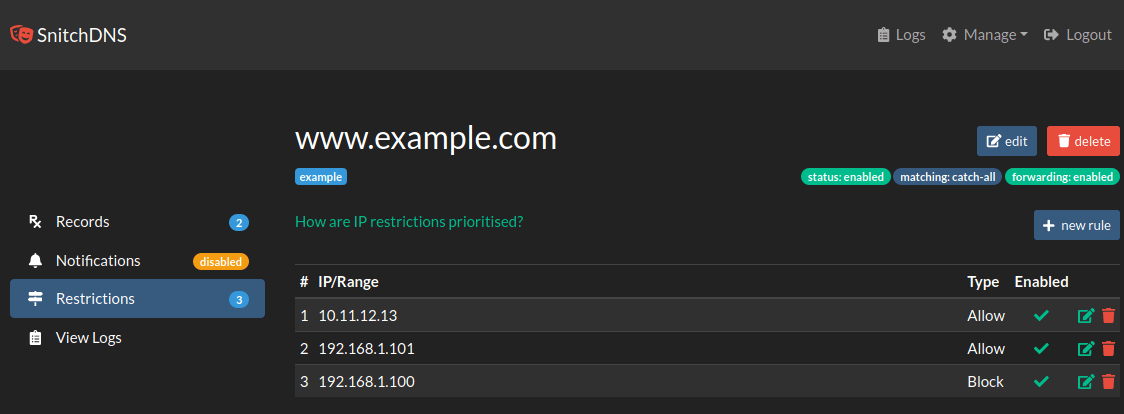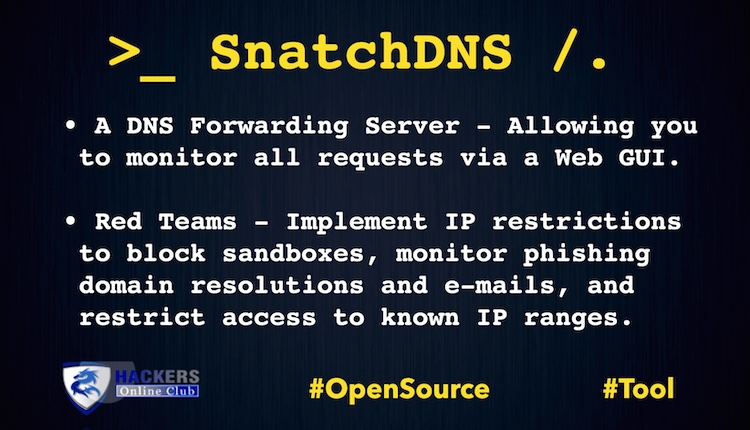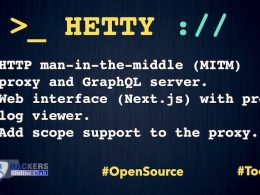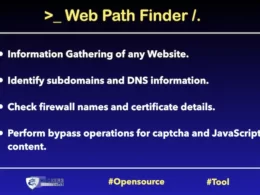SnitchDNS is a database driven DNS Server with a Web UI, written in Python and Twisted, that makes DNS administration easier with all configuration changed applied instantly without restarting any system services.
Twisted is an event-based framework for internet applications, supporting Python 3.6+. It includes modules for many different purposes.
One of its main features is the logging of all DNS queries allowing the discovery of network traffic endpoints, and it can also be used to implement canary tokens as it supports notifications via e-mail, web push, Slack, and Teams. Red teamers can also use SnitchDNS to monitor phishing domains for sandboxes, integrate with SIEM solutions, restrict responses to specific IP ranges, egress data via a DNS tunnel and catch-all domains, and more.

Basic Features
- Database Driven.
Changes are reflected immediately on each DNS request.
Supported DBMS:
SQLite
MySQL / MariaDB
Postgres - DNS Server
Support for common DNS Records.
A, AAAA, AFSDB, CNAME, DNAME, HINFO, MX, NAPTR, NS, PTR, RP, SOA, SPF, SRV, SSHFP, TSIG, TXT.
Catch-All Domains.
Ability to match any subdomain (no matter the depth) to a specific parent domain, for instance *.hello.example.com.
Unmatched Record Forwarding.
Functionality to intercept specific queries (ie only A and CNAME) and forward all other records to a third-party DNS server (ie Google).
Tags and Aliases. - IP Rules
Configure Allow/Block rules per domain. - Notifications. Receive a notification when a domain is resolved, via:
E-mail
Web Push
Slack
Microsoft Teams - User Management
Multi-User support
Each user is given their own subdomain to use.
LDAP Support
Two Factor Authentication
Password Complexity Management - Logging
All DNS queries are logged, whether they have been matched or not.
CSV Logging for SIEM integration. - Swagger 2.0 API
- Deployment
Ansible scripts for Ubuntu 18.04 / 20.04
Docker
CLI support for zone, record, user, and settings management.
CSV Export/Import

Use Cases
SnitchDNS can be used for:
- A DNS Forwarding Server – Allowing you to monitor all requests via a Web GUI.
- Red Teams – Implement IP restrictions to block sandboxes, monitor phishing domain resolutions and e-mails, and restrict access to known IP ranges.
- DNS Tunnel – Log all DNS requests and egress data.
- Let’s Encrypt DNS Challenge, using the API or the CLI interface.
- Ad-blocking.
- Integrate with SIEM solutions.
Installation
Please make sure you install using git rather than by downloading the repo manually.
Python
Python 3.6+ is required for SnitchDNS to work.

Packages
Install the following required packages:
sudo apt install git python3-pip python3-venv libpq-dev.
libpq-dev is required by the psycopg2 requirement for Postgres support (to be built while installing requirements.txt).
SnitchDNS Documentation
- Environment Variables
- Configuration Settings
- DNS Record Properties
- IP Restrictions
- Bind9 Forwarding
- Cloud Hosting
Limitations
Caching has not been implemented, which means this isn’t suitable for environments with hundreds of DNS requests per minute.
Also See – Batea- To Find Large Network Devices Using Machine Learning











